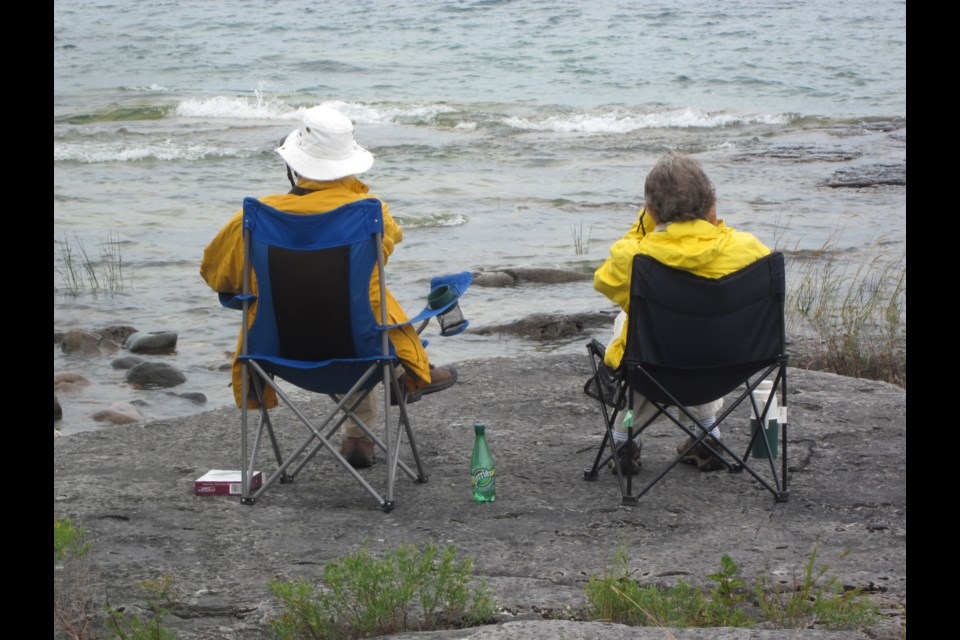A weekend on Manitoulin camping this September brought a mixture of weather, but thankfully warm temperatures. Camping at the Mississagi Lighthouse at the far end of Manitoulin Island is an experience all on its own.
Proprietors Jenna and James were hard at work preparing the place for its winter hibernation. The facility closed Sept. 14 and the duo are now off to Australia for a new experience.
We, on the other hand, were regular annual visitors to the area, looking for birds that arrive during the spring migration, leave during the fall migration or just fly passed through the Mississagi Strait on their way to feeding areas and distant lands.
One of the most interesting trip phenomena that seven of us observed occurred on the Saturday during the rain storm. The weather forecast had been for periodical rain with chances of thunder storms and lightening.
With migrating birds and birders, this can be an ideal situation to see a host of migrants, just as the bad weather recedes. The problem is that you have to go through the wet spell. At Wickett Lake, one of two lakes we call the twin lakes, our storm was becoming imminent.
We were walking through a cow pasture towards the lake after looking for sedge wrens, when Marlies noted how terribly black and wedge-like the black overcast clouds were. Some started talking about funnel clouds. On the small lake itself, there were first a couple of ring-billed gulls, then a few more, then very quickly a large flock of about 100 birds.
At first, we thought the gulls had found a school of fish, but they were not dipping their heads under the surface; they were nestled together. Bruce scans the horizon and notices a greyer wall of something moving towards us.
Fairly unresponsively, a few take a look as well and suddenly realize that this greyer wall was moving in our direction, over the water surface and hiding the distant shoreline.
Someone states, “I think there is a torrent coming.” Finally the group as a whole takes this seriously and makes for the car and in less than a minute, the sound of car doors slamming still fresh in our ears, the wall reaches us.
A deluge of water pours down on the cars and our vision is blurred. As quickly as it came, the storm recedes. It stops to only a trickle of its former glory. And this is the interesting part of the story. The gulls almost immediately leave the water where they had collected and move back to the cow pasture to resume their feeding on insects in the field.
The observation might suggest the gulls became aware of an imminent storm, moved to a safer place, then moved back to their former feeding activity. Our hopes of seeing a lot of migrating warblers however, did not transpire.
Meldrum Bay can be a very interesting place for spring and fall migration. Timing is everything. In fall, the wild grapes, mountain ash berries, apples and other fruits and nuts in the area are a ready source for the birds to eat. Gray catbird, Swainson’s thrush, orange-crowned warbler and hard to identify flycatchers called Empidonax can be seen.
Ruby-throated hummingbirds were still in the area and one buzzed by Will's head only a few inches above his hat. Out on the open water, a second Chris found a flock of 26 common loons and a single red-necked grebe for all to view.
There are plenty of birds to see before the winter invites them down to warmer climes. Take the time to view your backyard and check the tree tops or shrubby grounds for our feathered friends.
Chris Blomme is an executive member of the Sudbury Ornithological Society and works with animals at Laurentian University. Have a question for Chris? Send it to [email protected].
